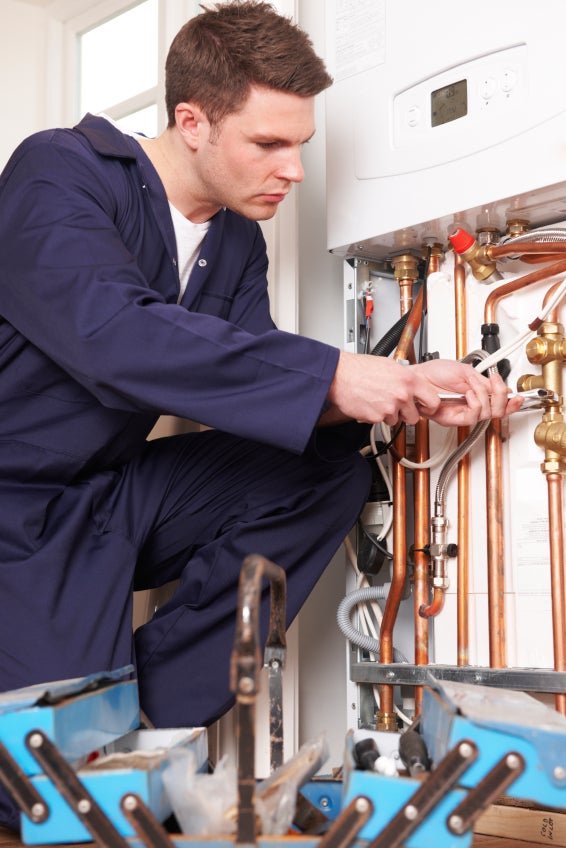How to save money by making your boiler more energy efficient

Your support helps us to tell the story
From reproductive rights to climate change to Big Tech, The Independent is on the ground when the story is developing. Whether it's investigating the financials of Elon Musk's pro-Trump PAC or producing our latest documentary, 'The A Word', which shines a light on the American women fighting for reproductive rights, we know how important it is to parse out the facts from the messaging.
At such a critical moment in US history, we need reporters on the ground. Your donation allows us to keep sending journalists to speak to both sides of the story.
The Independent is trusted by Americans across the entire political spectrum. And unlike many other quality news outlets, we choose not to lock Americans out of our reporting and analysis with paywalls. We believe quality journalism should be available to everyone, paid for by those who can afford it.
Your support makes all the difference.Now that winter is upon us, many of us are spending more time indoors. Top of everybody’s checklist is a home that can deal with the cold days and nights ahead. Your first priority should be your boiler as it provides a great deal of warmth through heating your radiators.
Arrange a routine boiler service
We have all battled with a broken boiler and deep down we know that it’s better to service it in time than wait for an impending breakdown. Booking your boiler in for a routine service will ensure that it runs more efficiently and safely. You’ll also save money in the long run as a small fault can be treated before it develops into a larger problem.
A typical service costs between £50- £80 for a standard efficiency boiler and £80 - £160 for a high-efficiency condensing boiler. If your boiler was fitted after 2005, it is a condensing boiler and you should look to spend £90+ VAT.
A routine service lasts for approximately an hour and begins with the heating engineer carrying out a visual check that your boiler meets current electrical, building and gas safety regulations. Next up is a check of the controls and operations of your boiler. There are nine components which require checking, including the main burner, fan and flue terminal.
The boiler casing will be cleaned to remove any dirt before the engineer finishes with an efficiency test of flue combustion gases and a gas tightness test to rule out gas leaks, like the silent killer carbon monoxide.
The powerflush
If your heating engineer discovers that your water circulation is inefficient, he or she may recommend a powerflush. You should powerflush your heating system every 5 years to keep your water circulation at its best. For an average 3-bed house with 8 to 12 radiators, a full powerflush will cost between £275 and £650, depending on which gas engineer you hire.
The powerflush involves a pump being connected into your heating system along with a flow reverser device. Water and a sludge crust breaker are pushed through the pump at high speed and low pressure to loosen the rust and sludge which has built up. A descaler is then pumped through to break down any limescale. Fresh clean water follows to remove the contaminated water. To complete the service, a corrosion inhibitor is pushed through the pump to prevent any future buildup of rust and sludge. This process reaches every radiator in your home.
DIY servicing: fitting a thermostat and/or insulation jacket
If you have a traditional conventional boiler, consider fitting a hot water tank thermostat and insulation jacket, which will make your boiler more energy efficient. A benefit is that you don’t need to hire an engineer for this.
Fitting a thermostat can save you £30 a year (based on a 3- bed home) and reduce your carbon dioxide emissions by 130kg. This works by controlling the temperature of the hot water leaving the tank. The thermostat is usually fitted to the tank, with the temperature sensor making contact with the cylinder inside. The thermostat should be set to a maximum temperature of 60°C to remain cost-effective.
The insulation jacket fits around your tank and can save you £40 a year through reducing up to 75% of the heat escaping through its walls. As the water in the tank remains hot for longer, less re-heating is needed. The jacket prices at £15 so the payback period is less than 6 months.
Join our commenting forum
Join thought-provoking conversations, follow other Independent readers and see their replies
Comments